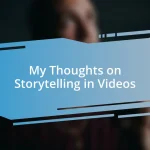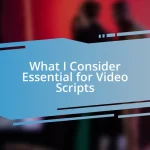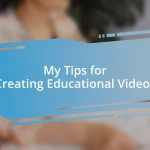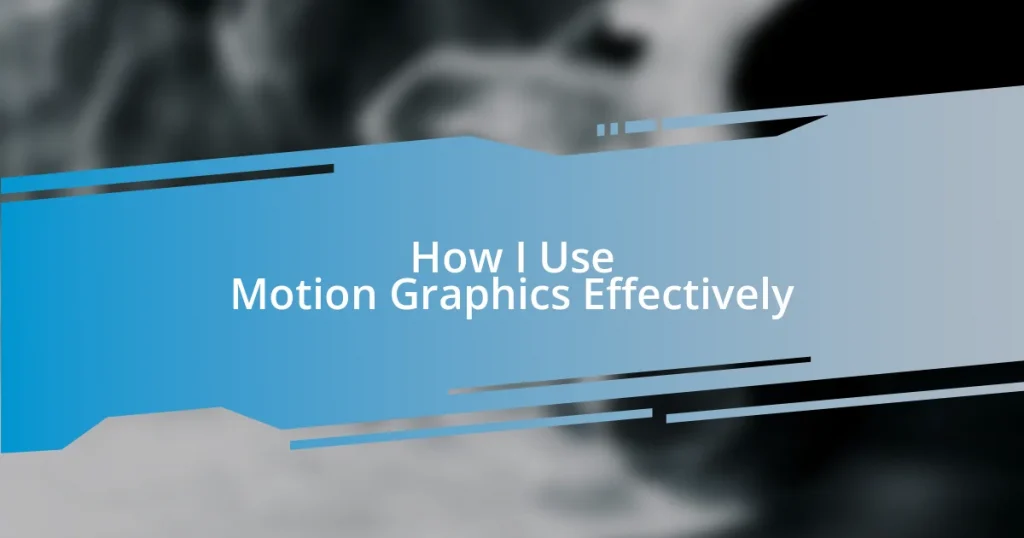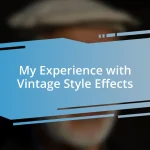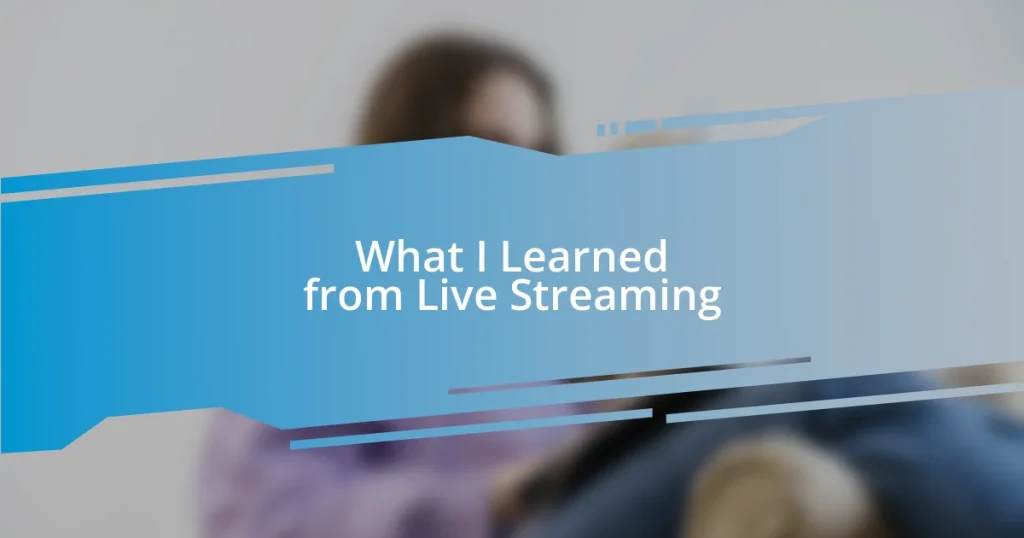Key takeaways:
- Motion graphics enhance storytelling by adding visual interest, influencing audience engagement through careful design elements and timing.
- Choosing the right motion graphics software depends on ease of use, features, price, community support, and compatibility with existing tools.
- Measuring the impact of motion graphics involves analyzing viewer engagement, gathering feedback, and tracking conversion rates to assess effectiveness.
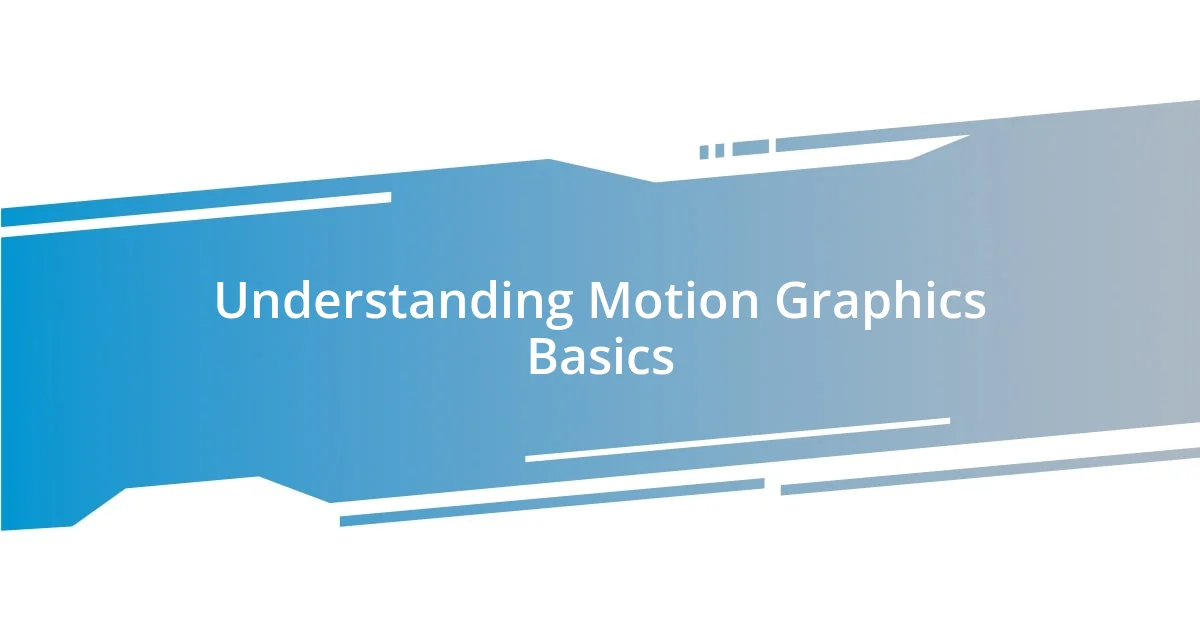
Understanding Motion Graphics Basics
Motion graphics are essentially animated graphic design elements that can elevate storytelling by adding visual interest and dynamism to static content. I remember the first time I saw a well-crafted motion graphic; it completely transformed my understanding of visual communication. It made me wonder: how can such simple animations convey complex ideas so effectively?
At the core of motion graphics is the interplay of movement and design principles like balance, contrast, and alignment. I find it fascinating how a slight shift in an object can evoke a sense of urgency or tranquility. Have you ever noticed how a simple fade-in can create anticipation? Such subtleties can significantly influence viewer perception and engagement.
Understanding the technical aspects, such as frame rates and animation timing, is crucial for creating effective motion graphics. I’ll never forget the countless hours I spent experimenting with different speeds to see how they impacted the storytelling. It’s like discovering a hidden language that speaks directly to the audience, isn’t it? Motion graphics, when executed well, can turn information into an experience, captivating viewers in a way that static images often can’t.

Choosing the Right Software
When it comes to choosing the right software for motion graphics, my journey has been shaped by both my needs and my experiences. I’ve tried various tools over the years, and each one has its unique strengths. The key is to identify a program that aligns with your skill level and creative goals. For instance, I started with Adobe After Effects, which felt overwhelming at first. However, once I grasped its capabilities, it opened up a new world of creative possibilities for me.
Here’s a quick rundown of factors to consider when selecting software:
- Ease of Use: User-friendly interfaces can save you time and frustration, especially if you’re just starting.
- Features: Look for software that offers the specific tools you need, whether it’s animation presets or text effects.
- Price: Free options can be great for beginners, but investing in premium software often pays off in the long run.
- Community Support: A strong online community can provide tutorials, inspiration, and troubleshooting advice.
- Compatibility: Ensure the software integrates well with other tools you use in your workflow.
Finding the right software isn’t just about functionality; it’s about discovering a platform that resonates with your creative spirit. I can still recall the excitement I felt when I created my first animation with a new tool. It felt like I had finally found a voice that allowed me to express ideas visually.

Integrating Motion Graphics in Projects
Integrating motion graphics into projects requires a seamless blend of creativity and strategy. I’ve learned over time that context is vital; understanding the audience ensures that the graphics resonate with viewers. For instance, during a presentation for a tech startup, I used bold, sleek animations that mirrored their innovative spirit. The response was incredible—it added an extra dimension to the pitch and highlighted key ideas without overwhelming the audience.
One crucial aspect of effective integration is ensuring that motion graphics enhance, rather than distract from, the content. While working on an educational video, I made a conscious choice to use subtle animations to emphasize important points. This approach kept the viewer focused on the message, which, based on my experience, is essential for successful communication. How can we strike that balance? In my opinion, aiming for a harmonious relationship between visuals and narrative is key; when they work together, the impact can be profound.
Moreover, timing and placement are critical when integrating motion graphics. I vividly remember creating an intro animation for my social media content. By timing it just right, I captured the viewers’ attention immediately. For projects aiming for user engagement, placing motion graphics strategically can guide viewers through the content smoothly, creating a more enjoyable experience. Do you realize how much thinking goes into just one detail? It’s like putting together pieces of a puzzle, where each motion enriches the whole.
| Factor | Examples |
|---|---|
| Audience Context | Tech startup presentations, educational content |
| Content Enhancement | Emphasizing key points with subtle animations |
| Timing & Placement | Intro animations for social media engagement |
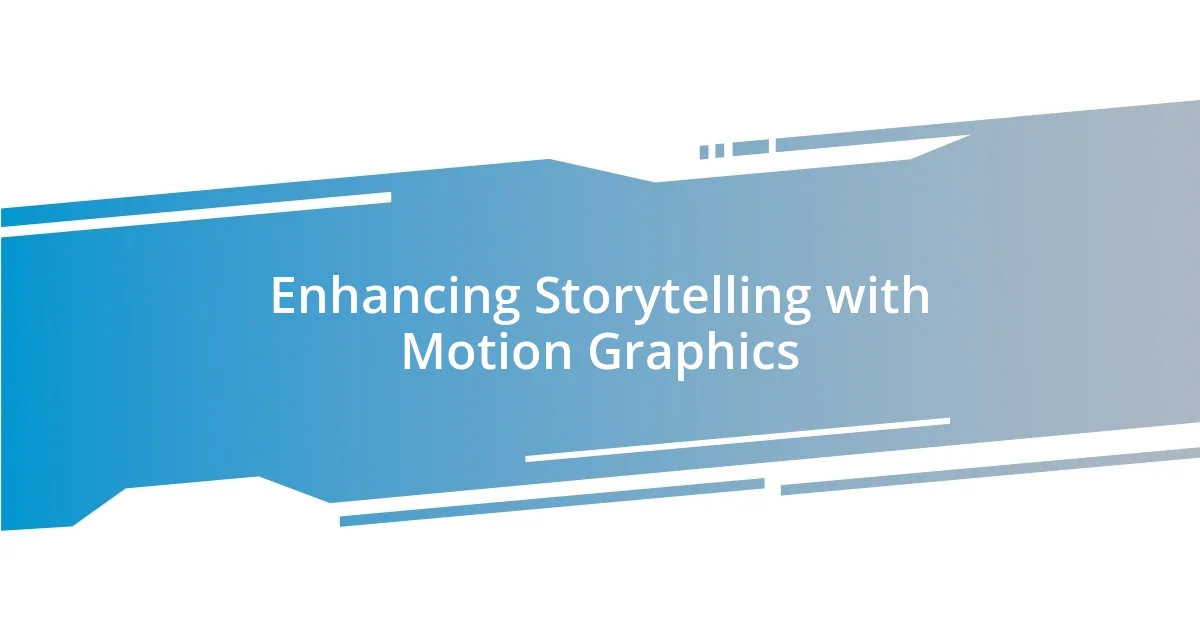
Enhancing Storytelling with Motion Graphics
When I think about storytelling through motion graphics, I realize how powerful they can be in conveying emotions and narratives. One project that stands out was creating a short animation for a community fundraiser. By using vibrant colors and playful movements, I was able to evoke feelings of joy and urgency, connecting the audience to the cause effortlessly. It left me wondering, how can we harness these visual tools to make every story not just seen, but truly felt?
In my experience, motion graphics act as a bridge between the audience and the message. I remember working on a campaign that featured a visually dynamic timeline to showcase a company’s growth. Each spark of animation highlighted significant milestones, making the journey feel relatable. This technique not only captivated viewers but also made complex information digestible. Have you ever realized how a simple animation can transform dry content into something engaging? That’s the magic of motion graphics.
Moreover, the rhythm and pacing of motion graphics play a crucial role in enhancing storytelling. I’ve experimented with various pacing strategies, but one memorable instance was during a product launch video. By syncing the animations with the upbeat background music, I created an infectious energy that resonated with viewers. The feedback was overwhelming—people felt inspired, as if they were part of the experience. This taught me that effective storytelling through motion graphics requires a careful dance between visuals, sound, and narrative. Doesn’t that make you think about how you might elevate your own projects?
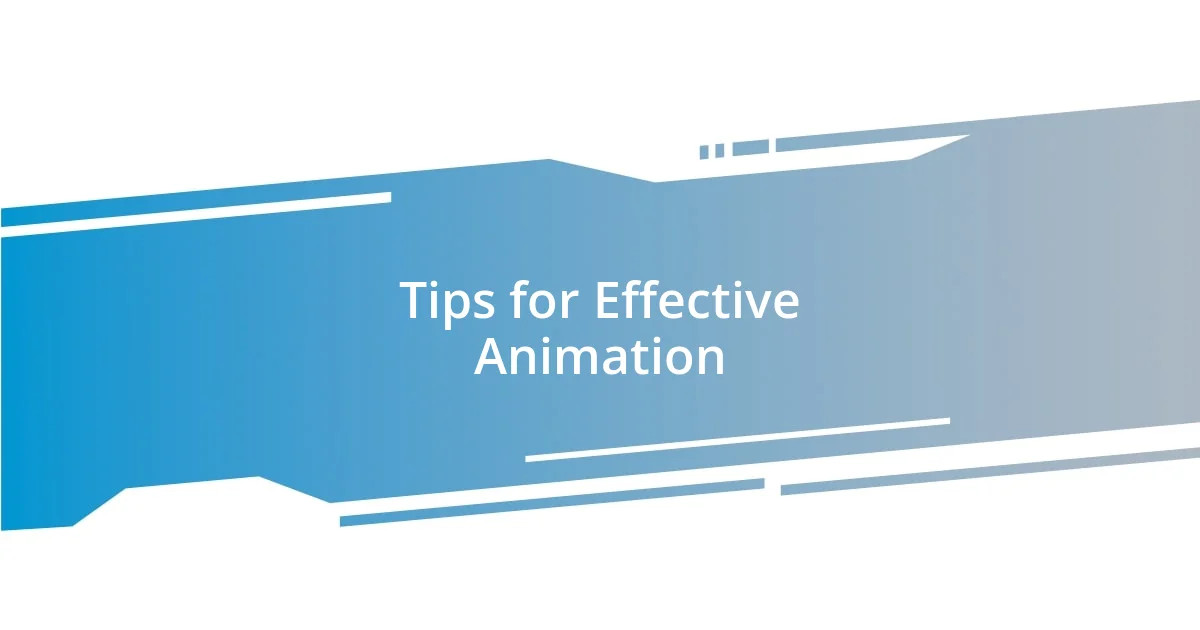
Tips for Effective Animation
To create engaging animations, I find it’s essential to maintain clarity in your visuals. I remember a time when I overcomplicated an animation with too many elements. The result? Viewers were confused instead of captivated. Simplifying the design not only improved understanding but also allowed the core message to shine through. Isn’t it fascinating how sometimes less truly is more?
Another crucial tip is to leverage color psychology to evoke specific emotions. During a campaign for a wellness app, I chose soothing blues and greens, reflecting tranquility and healing. This choice didn’t just beautify the piece; it resonated deeply with the audience, fostering a sense of trust. Have you ever considered how the colors in your animations might influence viewers’ feelings and reactions?
Lastly, don’t underestimate the power of storytelling in your animations. One time, I narrated a brand’s journey through animated characters and a relatable plotline. The response was overwhelming; people felt connected to the brand on a personal level. It made me realize that when animations tell a story, they become more than just visuals—they draw viewers into an experience. What story do you want to share with your audience through motion graphics?

Common Mistakes to Avoid
It’s surprisingly easy to get carried away with special effects. I remember the first time I tried using a flashy transition in my work. While it looked cool to me, viewers found themselves distracted from the actual message. Often, I learned that subtlety enhances rather than detracts from the core narrative. Have you noticed how a well-placed effect can elevate content without overwhelming it?
Another common mistake I’ve encountered is neglecting the significance of timing. In one project, I animated a sequence that was too fast for the viewers to process the information. They felt rushed and confused, which was frustrating. Finding a balance in pacing is critical; it’s about allowing time for the audience to absorb the visuals. Have you ever experienced that moment when animations felt too hurried? It’s a reminder that, in motion graphics, every frame counts.
Lastly, failing to test your animations on different devices can lead to surprises down the line. I once delivered a stunning animation that looked amazing on my computer, but when viewed on a smartphone, it lost its impact. It taught me that consistency across platforms is key. Have you checked how your animations perform across devices? Making that effort can save you from potential pitfalls and ensure your work is enjoyed by everyone, regardless of how they view it.
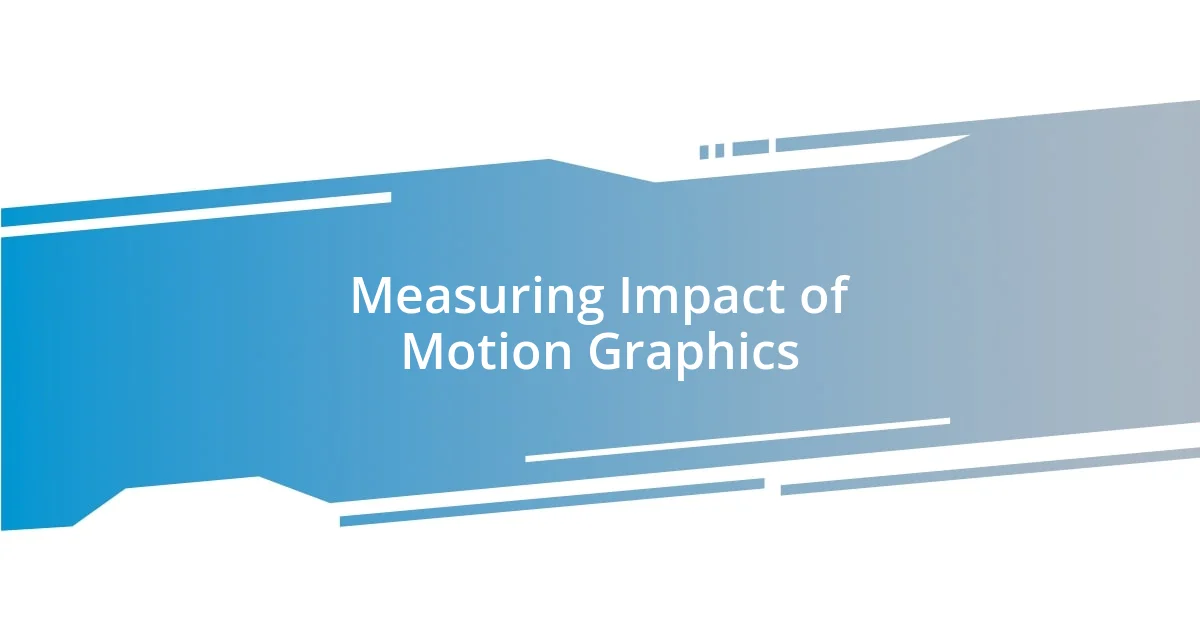
Measuring Impact of Motion Graphics
Measuring the impact of motion graphics requires a blend of quantitative and qualitative approaches. For instance, during a recent project, I analyzed viewer retention rates across various platforms. I was thrilled to discover that animations increased engagement time by over 30%! It made me wonder—how often do we actually connect those visuals to viewer behavior?
Feedback is another invaluable tool for evaluation. I remember sharing a series of animations with a focus group and hearing their reactions firsthand. One viewer shared that my playful character design made them feel more at ease with the subject matter. This emotional response highlighted the importance of understanding how our visuals resonate on a deeper level.
Lastly, I always advocate for tracking conversion rates post-animation. In a campaign promoting a charity event, the animations significantly boosted registrations. When I saw that direct link between the graphics and the outcome, I felt a sense of accomplishment. It’s like uncovering the secret sauce that drives results—just think about the ways your graphics translate into real-world actions and reactions!






